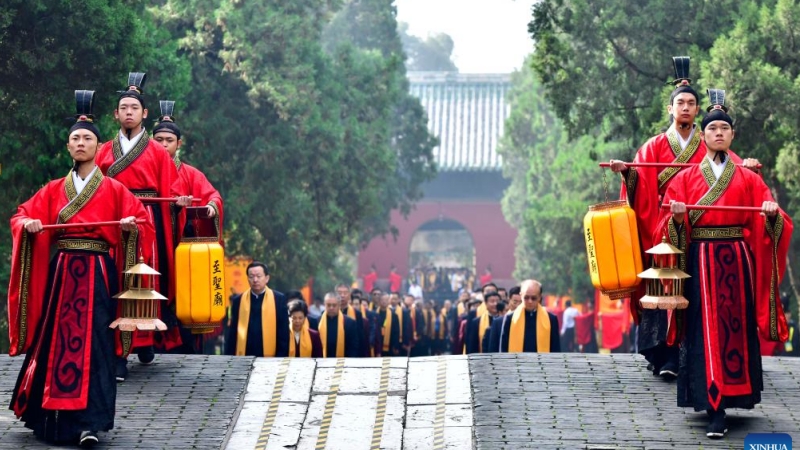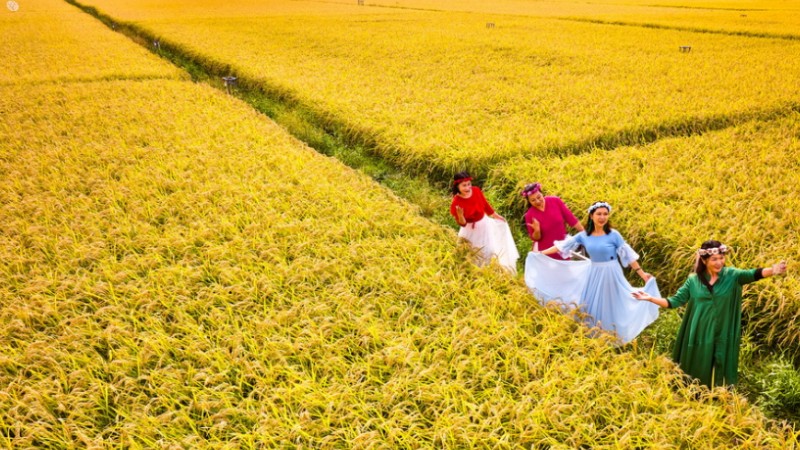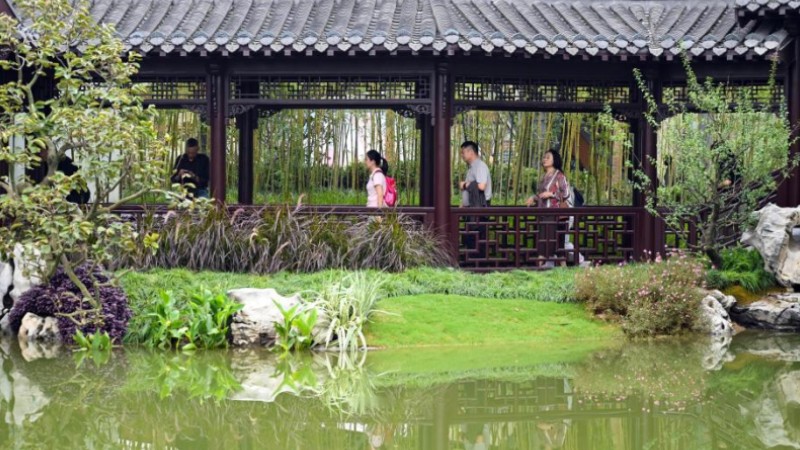Yellow River's ecological progress through lens of rural photographer
ZHENGZHOU, Oct. 9 (Xinhua) -- With over 100 terabytes of storage, Zhang Mingyun's hard drives house a photographic and video archive that spans four decades.
This extensive collection meticulously chronicles the dynamic changes of the Yellow River and the remarkable transformation of the swan population that winters in the city of Sanmenxia in central China. These swans have evolved from a scattered few to a thriving community.
To the rural landscape photographer's delight, his work now serves as a valuable resource for researchers delving into the study of swans.
Zhang, 62, has spent a lifetime capturing images of the two things he loves most, the Yellow River and the swans that inhabit its banks.
Hailing from Sanmenxia's Jiaokou Village, situated on the southern banks of the Yellow River, Zhang earned a reputation as a highly-capable man during his youth, establishing himself as one of the early success stories of his generation.
In the 1980s, he bought an instant camera and started his career as a wedding photographer, skillfully capturing cherished moments for others. Given his proximity to the Yellow River, he also turned his lens towards the natural splendor of China's second-longest river.
"Back then, film was really expensive, and I couldn't take too many photos. I chose to occasionally capture the beauty of the Yellow River at sunrise and sunset. At that time, there were very few swans, and they were extremely vigilant. They would fly away as soon as someone approached, making it challenging to photograph them," Zhang recalled.
In the 1990s, as industry and mining activities boomed, several tributaries of the Yellow River began to suffer from pollution. Zhang remembers that during this time, the Jianhe River, which flows into the Yellow River, became dirty and foul-smelling. "Not to mention the swans, even people didn't want to go near the river."
Since then, China has initiated a series of significant efforts to combat pollution in the Yellow River basin, which led to a gradual increase in the swan population in the Sanmenxia section.
"Sometime after 2010, the number of swans increased significantly," recalled Zhang. Motivated by this change, he invested in a single-lens reflex camera and a telephoto lens, both tailored to the task of capturing these elegant birds.
Years ago, a pair of injured swans didn't migrate and stayed in Sanmenxia, where they raised their young. Zhang dedicated several months to photographing every aspect of this remarkable journey, compiling it into a book he aptly titled "Child-Rearing Diary."
"From the moment the baby swans hatched until they had grown up and could fly, I visited almost every day. I didn't want to miss any moment of the baby swans' growth," Zhang said as he flipped through the album, narrating the young swans' journey to adulthood.
To encourage more people to protect swans, Zhang founded Sanmenxia's volunteer swan protection association, which now boasts over 1,000 members. In 2017, he was elected as a deputy of the People's Congress of Sanmenxia and has since submitted proposals annually for the protection of swans and wildlife.
Sanmenxia in 2014 introduced a work plan and related regulations for the protection of swans and their habitats, further enhancing wildlife protection.
Simultaneously, it strengthened efforts to control pollution in its section of the Yellow River, implementing reforestation and ecological restoration measures to rehabilitate over 70,000 mu (about 4,666.67 hectares) of mined land and creating a 240-kilometer-long ecological corridor along the Yellow River.
These accelerated ecological restoration efforts have ushered in a newfound sense of joy for both local wildlife and residents, offering happiness previously unimaginable.
Within the Sanmenxia segment of the Yellow River, at least nine swan habitats now flourish, housing a thriving population exceeding 16,000 swans. During the winter season, Sanmenxia's swan lake wetland park has become a popular destination, drawing both local residents and tourists who relish the opportunity to closely observe these graceful creatures.
"Nowadays, people can easily take great swan photos with their phones. People are friendly to swans, and swans are friendly to people," Zhang said with a smile.
Photos
Related Stories
- In pics: Autumn scenery along Xiaolangdi water conservancy project on the Yellow River
- Scenery of canyon on Yellow River in Henan
- Pic story of inheritor of Yellow River Chengni inkstone in Henan
- InPics: Riverine town prospers as tourism booms along Yellow River
- Yellow River main stream sees improved water quality
Copyright © 2023 People's Daily Online. All Rights Reserved.









